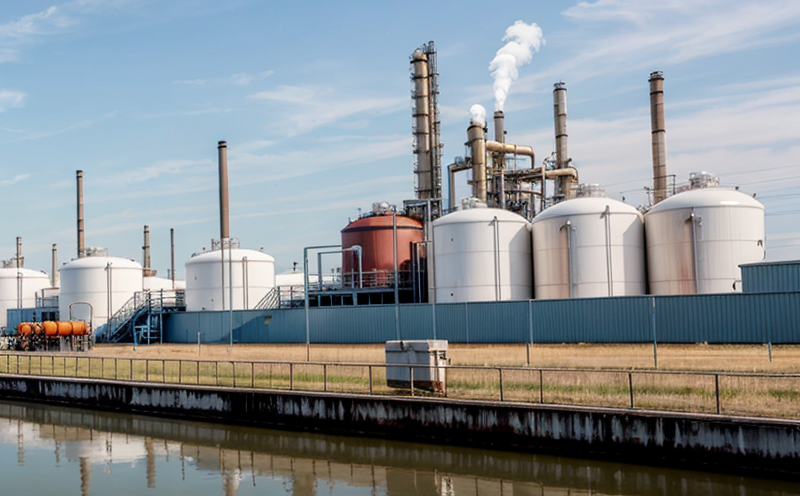ISO 5667 Environmental Sample Chemical Safety Testing
The ISO 5667 standard is a critical cornerstone in environmental sample chemical safety testing. It provides methodologies for the collection, preservation, and analysis of water samples to determine the presence and concentration of specific chemicals that may pose risks to human health or the environment.
Environmental hazards can arise from various sources such as industrial discharges, agricultural runoff, and accidental spills. Ensuring compliance with ISO 5667 is essential for organizations involved in manufacturing, water treatment, and environmental remediation. The standard specifies procedures that ensure accurate and reliable chemical analysis, which is indispensable for regulatory compliance and risk assessment.
The testing process under ISO 5667 involves several critical steps starting from sample collection to final result reporting. Samples are collected using specialized equipment designed to minimize contamination and maintain the integrity of the sample throughout transportation to the laboratory. Once at the lab, samples undergo rigorous preservation techniques to prevent degradation or alteration.
After preservation, analytical methods such as high-performance liquid chromatography (HPLC), gas chromatography-mass spectrometry (GC-MS), and inductively coupled plasma mass spectrometry (ICP-MS) are employed. These advanced technologies allow for precise quantification of target chemicals at trace levels.
The acceptance criteria under ISO 5667 are stringent, with defined limits for allowable concentrations of hazardous substances. Compliance with these standards is not only a legal requirement but also a testament to an organization's commitment to sustainable practices and public health.
Our laboratory adheres strictly to the ISO 5667 protocol, ensuring accurate and reliable results that meet international standards. Our team of experts is equipped with state-of-the-art equipment and employs rigorous quality control measures to deliver precise test outcomes.
| Parameter | Target Analytes | Sampling Methodology |
|---|---|---|
| Pharmaceuticals | Ciprofloxacin, Clindamycin, Sulfamethoxazole | Surface water sampling, filtration |
| Pesticides | Diazinon, DDT, Endosulfan | Air and soil sampling, extraction |
| Metals | Copper, Lead, Mercury | Water and sediment sampling, digestion |
Applied Standards
The ISO 5667 standard is widely recognized for its comprehensive approach to environmental sample chemical safety testing. It aligns with other international standards such as ASTM E1039-21 and EN 1040, which provide complementary methodologies in the field of water quality analysis.
The application of ISO 5667 ensures that all stakeholders involved in water management are on the same page regarding sample handling and analytical procedures. This harmonization is crucial for consistent data collection across different regions and laboratories, facilitating better collaboration and more effective environmental protection strategies.
Organizations adopting these standards benefit from improved accuracy and precision in their chemical safety assessments. The standard also promotes transparency by requiring detailed documentation of the entire testing process, thus enhancing trust among regulators, customers, and the public.
Competitive Advantage and Market Impact
Adopting ISO 5667 standards can significantly enhance an organization's reputation in terms of environmental responsibility and regulatory compliance. By demonstrating adherence to international best practices, companies position themselves favorably in the market, attracting clients who prioritize sustainability.
In industries such as water treatment plants, pharmaceutical manufacturers, and agricultural producers, ISO 5667 compliance is a prerequisite for doing business with government bodies and large corporations. This certification not only opens doors to new markets but also fosters long-term relationships based on mutual trust and ethical standards.
The rigorous nature of the ISO 5667 protocol also instills confidence in stakeholders regarding product safety and environmental impact. For R&D teams, this means more accurate data for developing safer products and processes, ultimately leading to innovations that contribute positively to society.
By leveraging our expertise in ISO 5667 testing, we help organizations stay ahead of regulatory changes and emerging trends. Our services are tailored to meet the specific needs of each client, ensuring they achieve their goals efficiently and effectively.
Use Cases and Application Examples
- Treatment Plant Compliance: Regular sampling from treatment plants ensures that discharge levels are within acceptable limits as per local regulations.
- Agricultural Runoff Monitoring: Testing for pesticides in runoff helps identify potential contamination sources and implement mitigation measures.
- Pharmaceutical Waste Management: Detecting pharmaceutical residues in wastewater aids in managing waste disposal practices effectively.
| Scenario | Analytes Targeted | Action Taken |
|---|---|---|
| Treatment Plant Discharge | Ciprofloxacin, Clindamycin, Sulfamethoxazole | Implementing stricter filtration protocols and monitoring systems. |
| Agricultural Runoff Pollution | Diazinon, DDT, Endosulfan | Encouraging farmers to adopt organic pest control methods. |
| Pharmaceutical Waste Overflow | Copper, Lead, Mercury | Enhancing waste treatment facilities and improving disposal procedures. |





